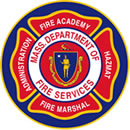STOW – The state is offering suggestions on preventing and dealing with frozen pipes.
“This bitter cold weather brings the risk of frozen pipes,” Acting State Fire Marshal Peter J. Ostroskey said. “As difficult as that situation is, it is important not to make a bad situation worse. Many people cause fires trying to thaw frozen pipes.”
Tips for Preventing Frozen Pipes
• When the weather is very cold outside, let the water drip from the faucet served by exposed pipes. Running water through the pipe – even at a trickle – helps prevent pipes from freezing because the temperature of the water running through it is above freezing.
• Open kitchen and bathroom cabinet doors to allow warmer air to circulate around the plumbing. Be sure to move any harmful cleaners and household chemicals up out of the reach of children.
• Keep the thermostat set to the same temperature both during the day and at night. By temporarily suspending the use of lower nighttime temperatures, you may incur a higher heating bill, but you can prevent a much more costly repair job if pipes freeze and burst.
• If you will be going away during cold weather, leave the heat on in your home or business set to a temperature no lower than 55ºF.
Protect Sprinklers Systems
In order to protect sprinkler systems, check on your building during to the cold snap, especially if you don’t have a low temperature alarm. Make sure that all portions of the building remain heated to at least 40°F and not exposed to freezing conditions. Setting the thermostat higher -50-60 °F during this cold snap will help make sure pipes in concealed areas stay warm.
To Thaw Frozen Pipes
• If you turn on a faucet and only a trickle comes out, suspect a frozen pipe. Locate the area of the water pipe that might be frozen. Likely places include pipes running against exterior walls or where your water service enters your home through the foundation.
• Keep the faucet open. As you treat the frozen pipe and the frozen area begins to melt, water will begin to flow through the frozen area. Running water through the pipe will help melt more ice in the pipe.
• Apply heat to the section of pipe using an electric heating pad wrapped around the pipe, an electric hair dryer, or wrapping pipes with towels soaked in hot water. Do not use a blowtorch, kerosene or propane heater, charcoal stove, or other open flame devices. A blowtorch can make water in a frozen pipe boil and cause the pipe to explode. All open flames in homes present a serious fire danger, as well as a severe risk of exposure to lethal carbon monoxide.
• Apply heat until full water pressure is restored. If you are unable to locate the frozen area, if the frozen area is not accessible, or if you cannot thaw the pipe, call a licensed plumber.
• Check all other faucets in your home to find out if you have additional frozen pipes. If one pipe freezes, others may freeze, too.
• Be careful using space heaters to warm up areas near pipes. Don’t overload circuits. Try not to use extension cords but if you must, make sure they are rated for the appliance. Heat producing appliances need stronger extension cords than lamps.
• Remember not to leave the door of a gas oven open; it will produce large amounts of carbon monoxide.
• Be sure there are working smoke and carbon monoxide alarms on every level of the home.


